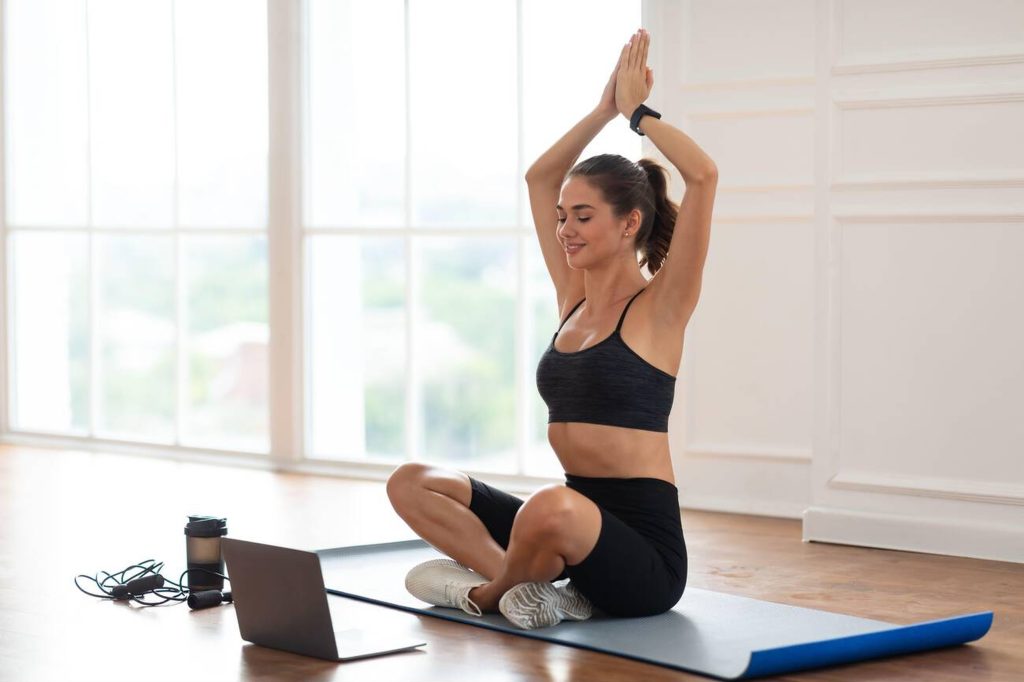What Is Kundalini Yoga and Its Benefits: A Comprehensive Guide for Beginners
Kundalini yoga is a practice that combines chanting, singing, breathwork, and repetitive poses. Kundalini Yoga is an ancient practice that offers profound benefits for the mind, body, and spirit. Unlike other forms of yoga that focus primarily on physical postures, Kundalini Yoga delves deep into the realms of energy, consciousness, and spiritual awakening.
To help others embrace this high-vibrational lifestyle, it’s essential to understand what Kundalini is, how it impacts the mind, body, and soul, and why it is effective.
Whether you’re a beginner curious about this transformative practice or someone seeking to deepen your spiritual journey, this guide will walk you through everything you need to know about Kundalini Yoga’s benefits, and practice at home effectively.
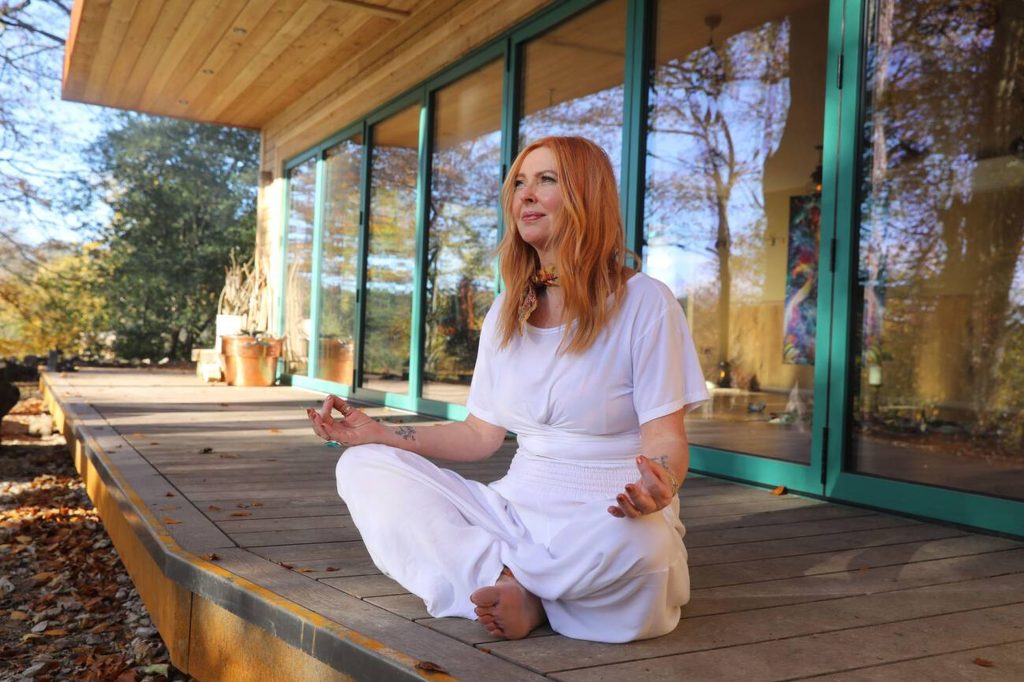
What is Kundalini Yoga?
The word “Kundalini” is derived from the Sanskrit term “kundal,” meaning “circular.” It also symbolizes a coiled snake. According to practitioners, Kundalini energy is similar to that coiled snake, lying dormant at the base of your spine, waiting to be awakened.
Kundalini Yoga is often referred to as the “Yoga of Awareness.” It involves a combination of physical postures, breathing techniques (pranayama), chanting (mantras), and meditation to awaken the dormant energy at the base of the spine, known as Kundalini.
This energy is believed to travel up through the chakras, or energy centers, leading to heightened spiritual awareness and self-realization.
In yoga, chakras are the seven energy centers in your body. They include
- root chakra
- sacral chakra
- naval, or solar plexus, chakra
- third eye chakra
- crown chakra
- heart chakra
- throat chakra
How Kundalini Yoga differ from other types of yoga?
Kundalini Yoga is more spiritually focused than other forms of yoga. It involves physical movement, but unlike Hatha and Vinyasa Yoga, which focus on physical poses, these are not the focus. Kundalini Yoga is also more structured and repetitive. Instead of flowing with the breath like other types of yoga, Kundalini Yoga integrates chanting, chanting, movement, and breath in specific patterns. (Source)

How Does Kundalini Yoga Work?
Kundalini Yoga works by stimulating the flow of energy through the nadis, the energy channels of the body.
Through a series of specific postures (asanas), breathing exercises, and meditation techniques, practitioners seek to awaken the kundalini energy and channel it through the chakras, balancing and activating each chakra.
This process not only promotes physical health, but also improves mental clarity, emotional balance, and spiritual growth.
The Benefits of Kundalini Yoga
Kundalini Yoga offers a wide range of benefits, Let’s examine them more closely.
Here are some of the key benefits:
- Physical Health: Regular practice of Kundalini Yoga can improve flexibility, strengthen the immune system, and increase energy levels. It also helps in balancing the endocrine system, which regulates hormones and overall body functions.
- Mental Clarity: The meditative aspects of Kundalini Yoga help in reducing stress, anxiety, and mental clutter. This leads to improved focus, concentration, and cognitive function.
- Emotional Healing: Kundalini Yoga is known for its ability to release emotional blockages and promote healing from past traumas. It helps in cultivating a positive mindset and emotional resilience.
- Spiritual Growth: Kundalini Yoga is a powerful tool for spiritual development. It enhances self-awareness, deepens meditation practices, and promotes a connection with higher consciousness.
The purported benefits may include the following:
- more empathy
- increased creativity
- improved charisma
- increased energy
- internal peace
Here are some tips for beginners:
- Choose the Right Poses: Start with simple poses like Cat-Cow Pose, Spinal Flex, and Sat Kriya. These poses are gentle yet effective in activating the Kundalini energy.
- Focus on Breathwork: Pranayama, or controlled breathing, is a crucial component of Kundalini Yoga. Begin with Long Deep Breathing and Breath of Fire to energize the body and calm the mind.
- Incorporate Meditation: Meditation is key to experiencing the deeper aspects of Kundalini Yoga. Start with 5-minute Kundalini Yoga meditations, gradually increasing the duration as you become more comfortable.
- Practice Regularly: Consistency is essential. Aim to practice Kundalini Yoga at least three times a week to experience its full benefits.
Key aspects of a Kundalini Yoga practice for beginners
Kundalini Yoga involves a series of poses, breaths, and meditations designed to awaken the kundalini energy at the base of the spine. Here are some common Kundalini Yoga poses:
1. Lotus Pose (Padmasana)
A seated posture with crossed legs, often used for meditation
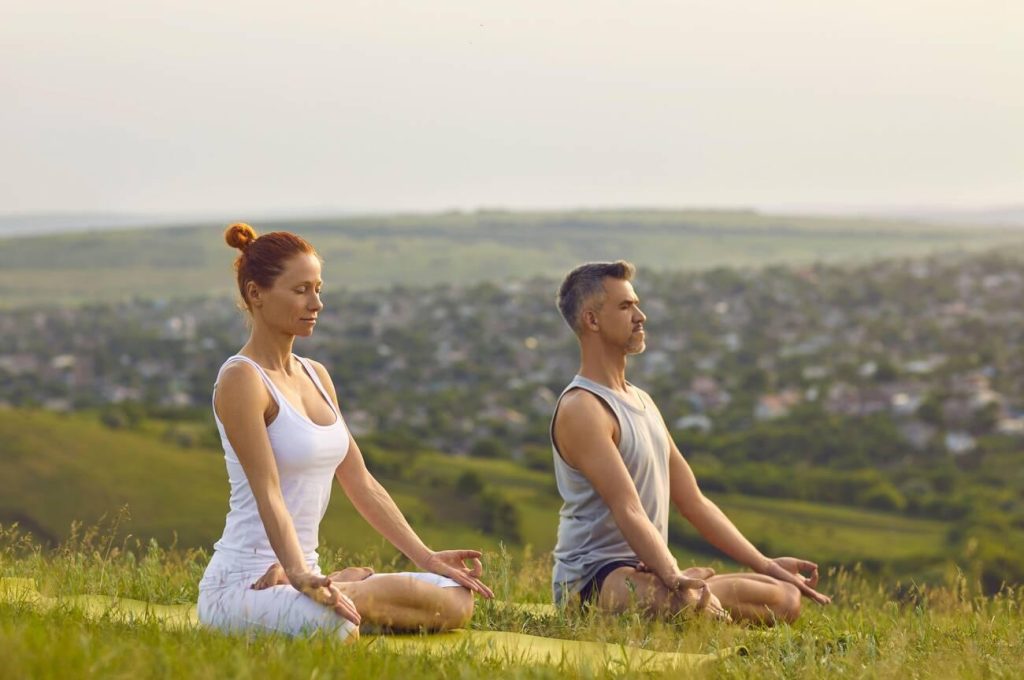
Steps:
- Sit on the floor with your legs stretched out in front of you.
- Bend your right knee and place your right foot on your left thigh.
- Bend your left knee and place your left foot on your right thigh.
- Place your hands on your knees, palms facing up, or in a mudra (hand gesture).
- Keep your spine straight, shoulders relaxed, and focus on your breath.
- Close your eyes and breathe deeply, holding this position for a few minutes.
Benefits: Enhances concentration, calms the mind, and prepares the body for meditation.
2. Cat-Cow Pose (Marjaryasana-Bitilasana)
A dynamic movement between arching and rounding the back, helping to warm up the spine.
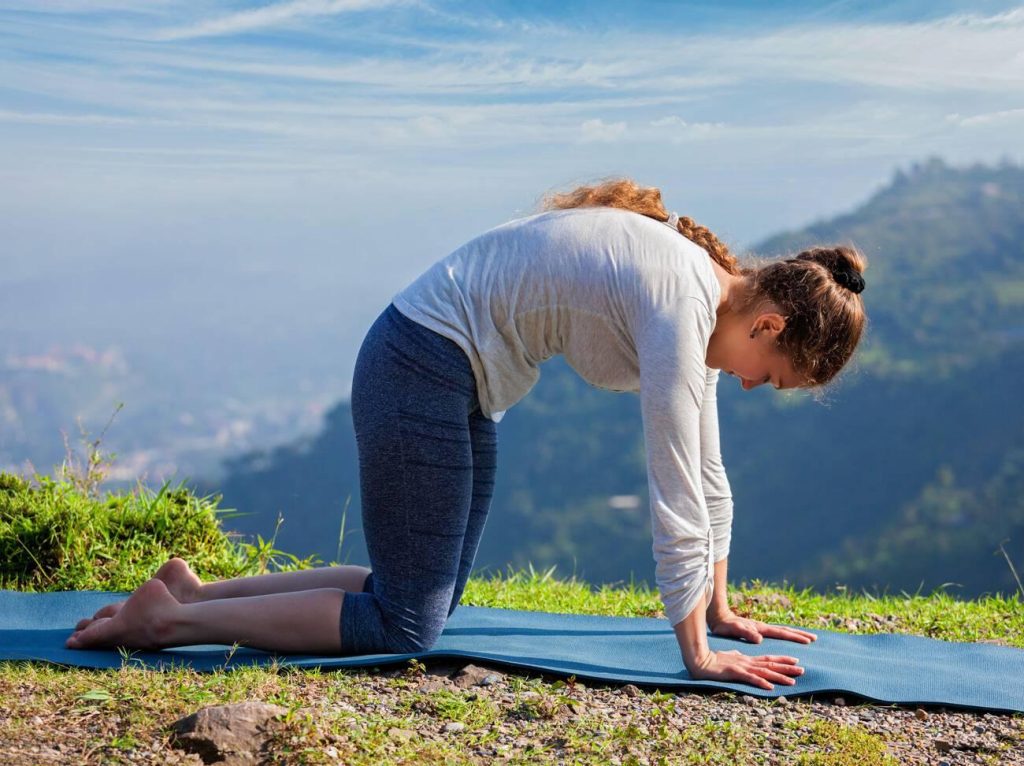
Steps:
- Start on your hands and knees in a tabletop position (wrists directly under shoulders, knees under hips).
- Inhale and arch your back, dropping your belly toward the floor while lifting your head and tailbone up (Cow Pose).
- Exhale and round your back, tucking your chin to your chest and drawing your belly button toward your spine (Cat Pose).
- Continue flowing between Cat and Cow poses, synchronizing with your breath, for about 1-2 minutes.
Benefits: Increases flexibility in the spine, massages internal organs, and warms up the body.
3. Cobra Pose (Bhujangasana)
A gentle backbend that opens the chest and strengthens the spine.
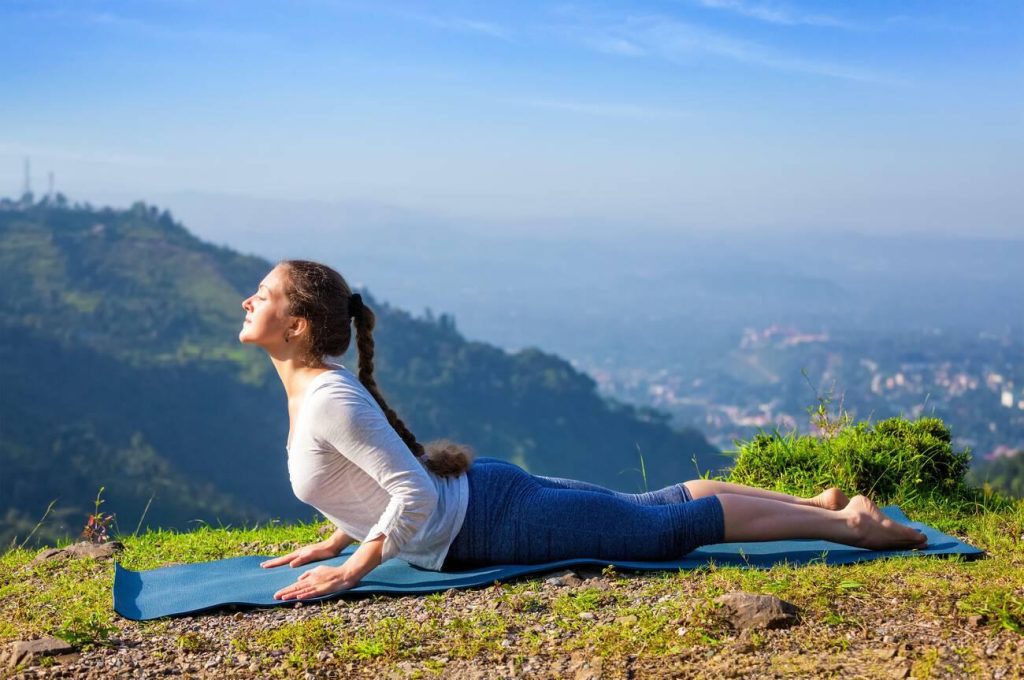
Steps:
- Lie face down on the floor with your legs extended and feet together.
- Place your hands under your shoulders, elbows close to your body.
- Inhale and slowly lift your chest off the floor, using the strength of your back muscles while keeping your elbows slightly bent.
- Keep your shoulders relaxed and gaze slightly upward.
- Hold the pose for a few breaths, then exhale and lower your chest back to the floor.
Benefits: Strengthens the spine, opens the chest, and relieves stress and fatigue.
4. Ego Eradicator
Involves sitting in easy pose and using Breath of Fire with arms extended upward at 60-degree angles.
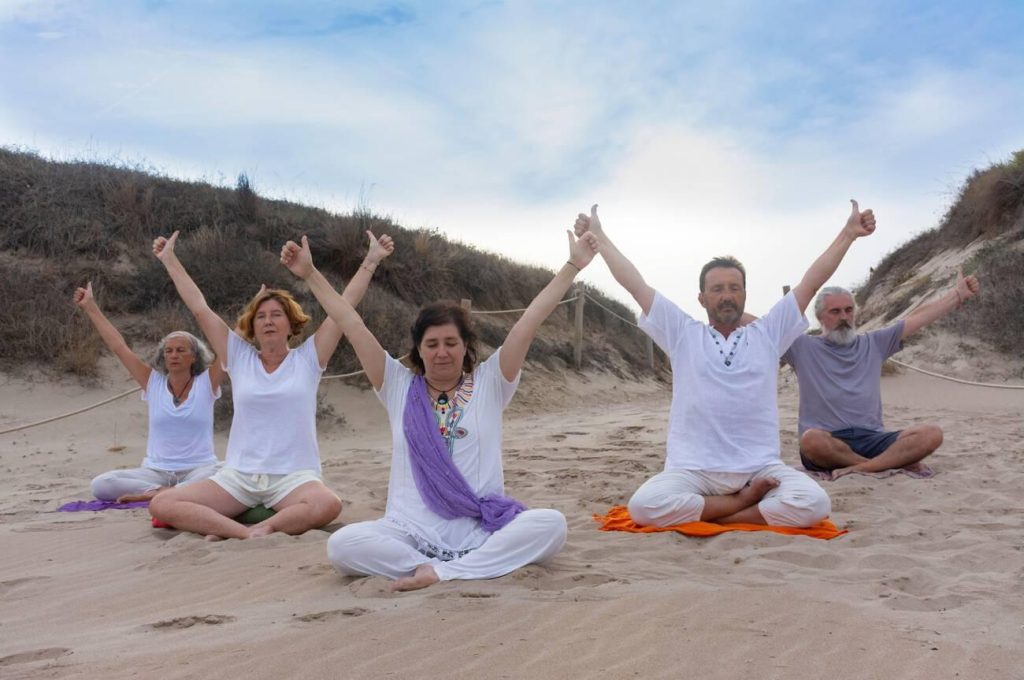
Steps:
- Sit comfortably in Easy Pose (cross-legged) with a straight spine.
- Extend your arms upward at a 60-degree angle, fingers curled into the palms, thumbs pointing up.
- Begin Breath of Fire: rapid, rhythmic breathing through the nose, pumping the navel in and out with each breath.
- Continue for 1-3 minutes, then inhale deeply, touch your thumbs together overhead, hold the breath, and exhale slowly.
- Lower your arms and relax.
Benefits: Clears the mind, balances the nervous system, and energizes the body.
5. Stretch Pose
Lying on the back, lifting the legs and head slightly off the ground while engaging the core.
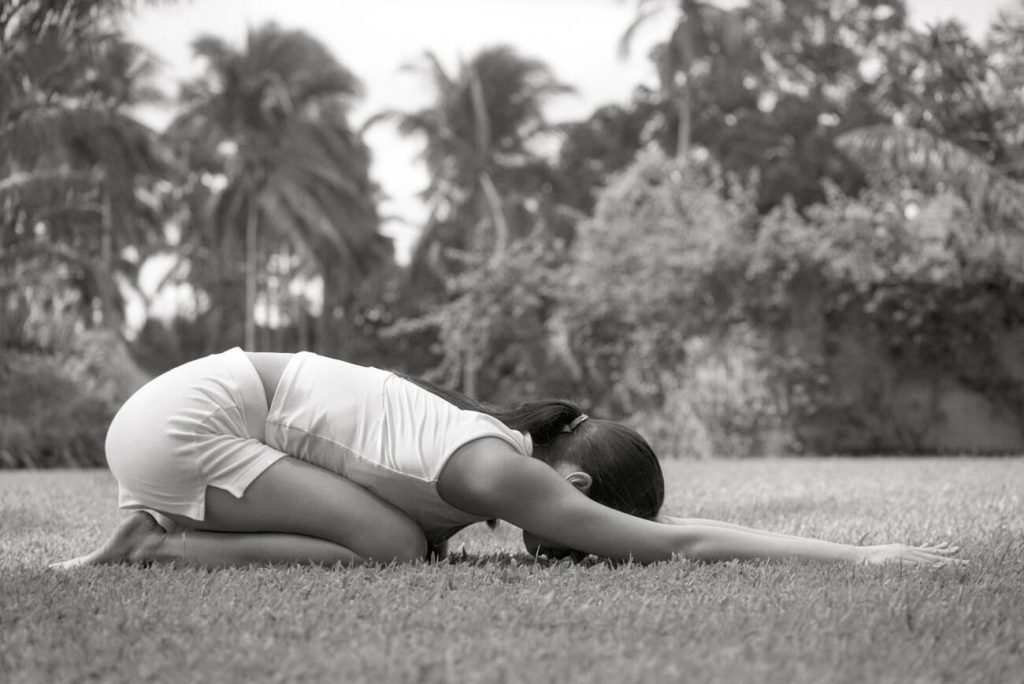
Steps:
- Lie flat on your back with arms by your sides, palms facing down.
- Inhale and lift your head, shoulders, and feet about 6 inches off the ground.
- Extend your arms forward, parallel to the floor, and gaze at your toes.
- Engage your core muscles and begin Breath of Fire.
- Hold the position for 1-2 minutes, then relax and lower your body back to the floor.
Benefits: Strengthens the core, improves digestion, and enhances willpower.
6. Bow Pose (Dhanurasana)
Lying on the stomach and holding the ankles while lifting the chest and thighs off the ground.
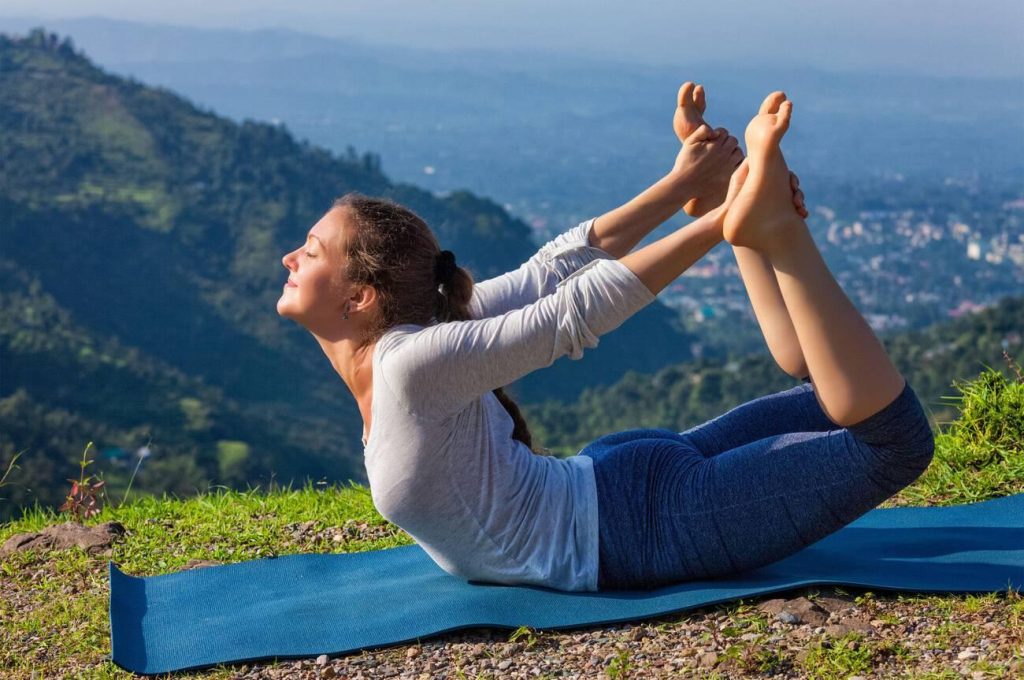
Steps:
- Lie on your stomach with your arms alongside your body, palms facing up.
- Bend your knees and reach back with your hands to grab your ankles.
- Inhale and lift your chest and thighs off the floor, pulling your ankles toward your shoulders.
- Keep your gaze forward and breathe deeply.
- Hold the pose for 15-30 seconds, then exhale and gently release back to the floor.
Benefits: Stretches the entire front body, strengthens the back, and stimulates the digestive organs.
7. Camel Pose (Ustrasana)
A deep backbend performed on the knees, opening the chest and heart center.
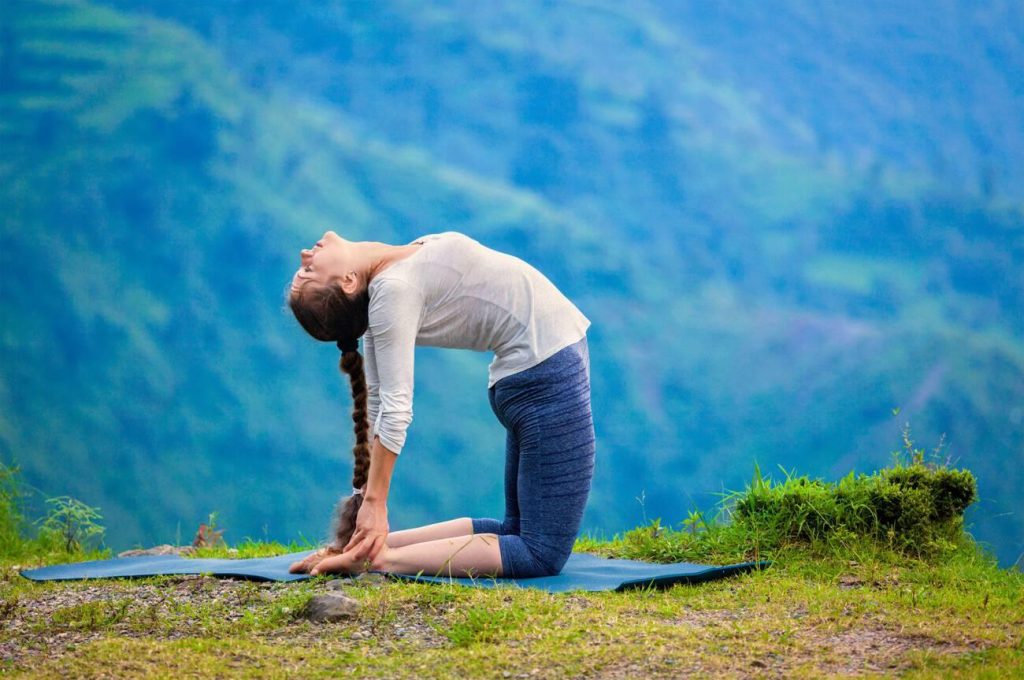
Steps:
- Kneel on the floor with your knees hip-width apart and your thighs perpendicular to the ground.
- Place your hands on your lower back for support, fingers pointing downward.
- Inhale and lift your chest, arching your back as you lean back slowly.
- If comfortable, reach for your heels with your hands, keeping your chest open.
- Hold the pose for a few breaths, then slowly return to the starting position.
Benefits: Opens the chest and heart center, improves posture, and increases flexibility in the spine.
8. Spinal Flex (Sufi Grind)
A seated pose involving circular movements of the torso to release tension in the spine.
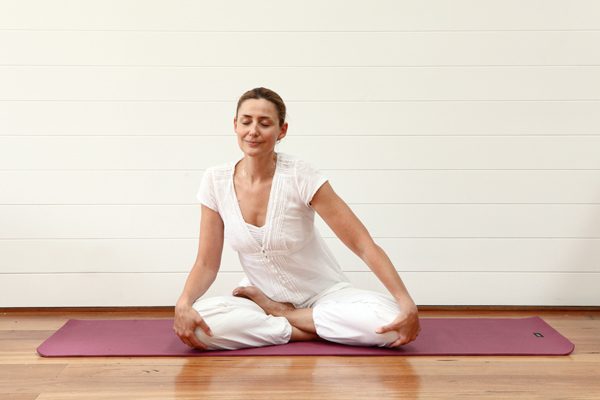
Steps:
- Sit in Easy Pose (cross-legged) with your hands resting on your knees.
- Begin making circular movements with your torso, leading with your chest.
- Move clockwise for a few breaths, then reverse the direction.
- Keep the movements fluid and synchronized with your breath.
- Continue for 1-3 minutes, then sit still and relax.
Benefits: Releases tension in the spine, massages internal organs, and enhances flexibility.
9. Frog Pose
A squatting position with heels lifted and hands on the ground, followed by lifting the hips while keeping the hands down.
Steps:
- Stand with your feet together, then squat down on your toes, keeping your heels lifted.
- Place your fingertips on the ground in front of you, with your knees wide and your back straight.
- Inhale as you lift your hips up, straightening your legs while keeping your fingertips on the ground.
- Exhale and return to the squat position.
- Repeat this movement in a rhythmic flow for 26 times or more.
Benefits: Strengthens the legs, opens the hips, and increases energy.
10. Sat Kriya
A powerful meditation pose with arms extended overhead, using the mantra “Sat Nam” while contracting and releasing the abdominal muscles.
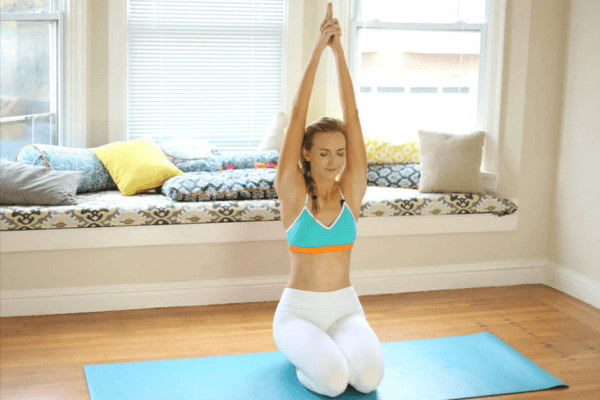
Steps:
- Sit on your heels in Rock Pose (Vajrasana) with your spine straight.
- Interlace your fingers, extending the index fingers upward, and stretch your arms straight up by your ears.
- Close your eyes and focus on the point between your eyebrows (third eye).
- Begin chanting “Sat” as you pull in your navel and chant “Nam” as you release it.
- Continue for 3-11 minutes, then inhale deeply, apply root lock (Mula Bandha), exhale, and relax.
Benefits: Awakens kundalini energy, strengthens the nervous system, and balances the chakras.
How to Practice Kundalini Yoga at Home
Practicing Kundalini Yoga at home is simple and convenient. Here’s how you can get started:
- Create a Sacred Space: Find a quiet, comfortable space where you won’t be disturbed. Set the mood with candles, incense, or soft music.
- Follow a Routine: Begin with a short warm-up, followed by a series of Kundalini Yoga poses, and end with meditation. Start with a 20-minute routine and gradually increase the duration.
- Use Online Resources: There are numerous online classes and videos available for Kundalini Yoga. These resources can guide you through your practice and help you stay motivated.
Conclusion
Kundalini yoga is more spiritually focused compared to other forms of yoga. While most yoga practices flow with the breath, Kundalini yoga integrates chanting, singing, movements, and breathing in specific patterns to foster spiritual enlightenment.
Research supports several benefits of Kundalini yoga, including reducing stress and anxiety, enhancing cognitive function, and improving self-perception and self-appreciation.
If you’re pregnant or have breathing issues, injuries, joint pain, or balance problems, consult your doctor to ensure Kundalini yoga is safe for you.

